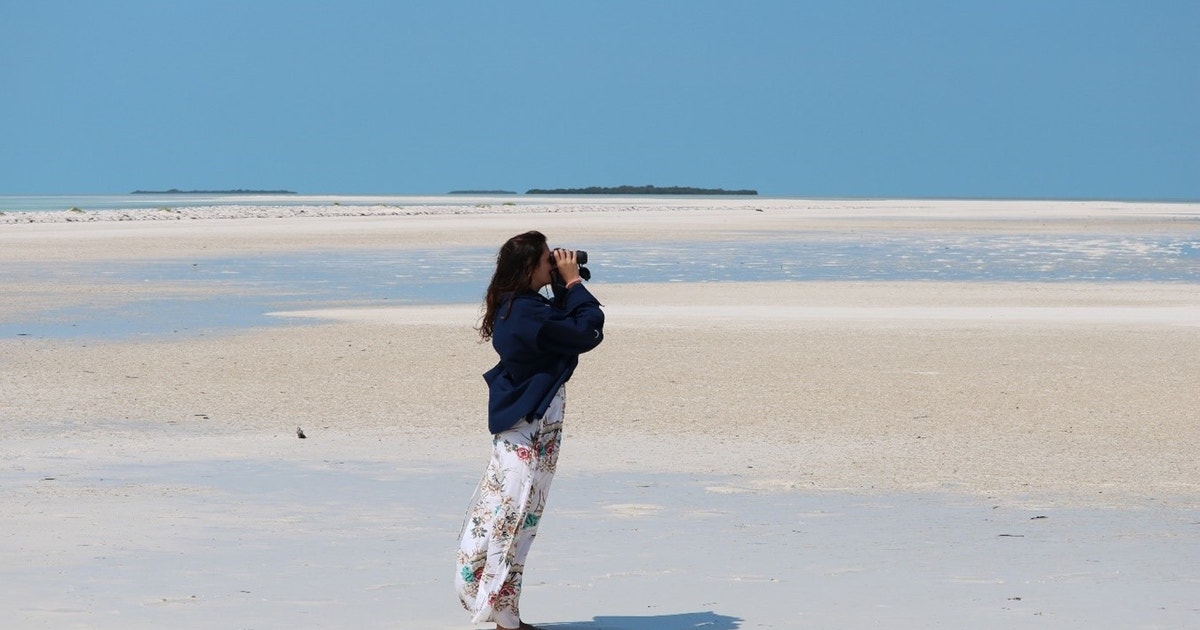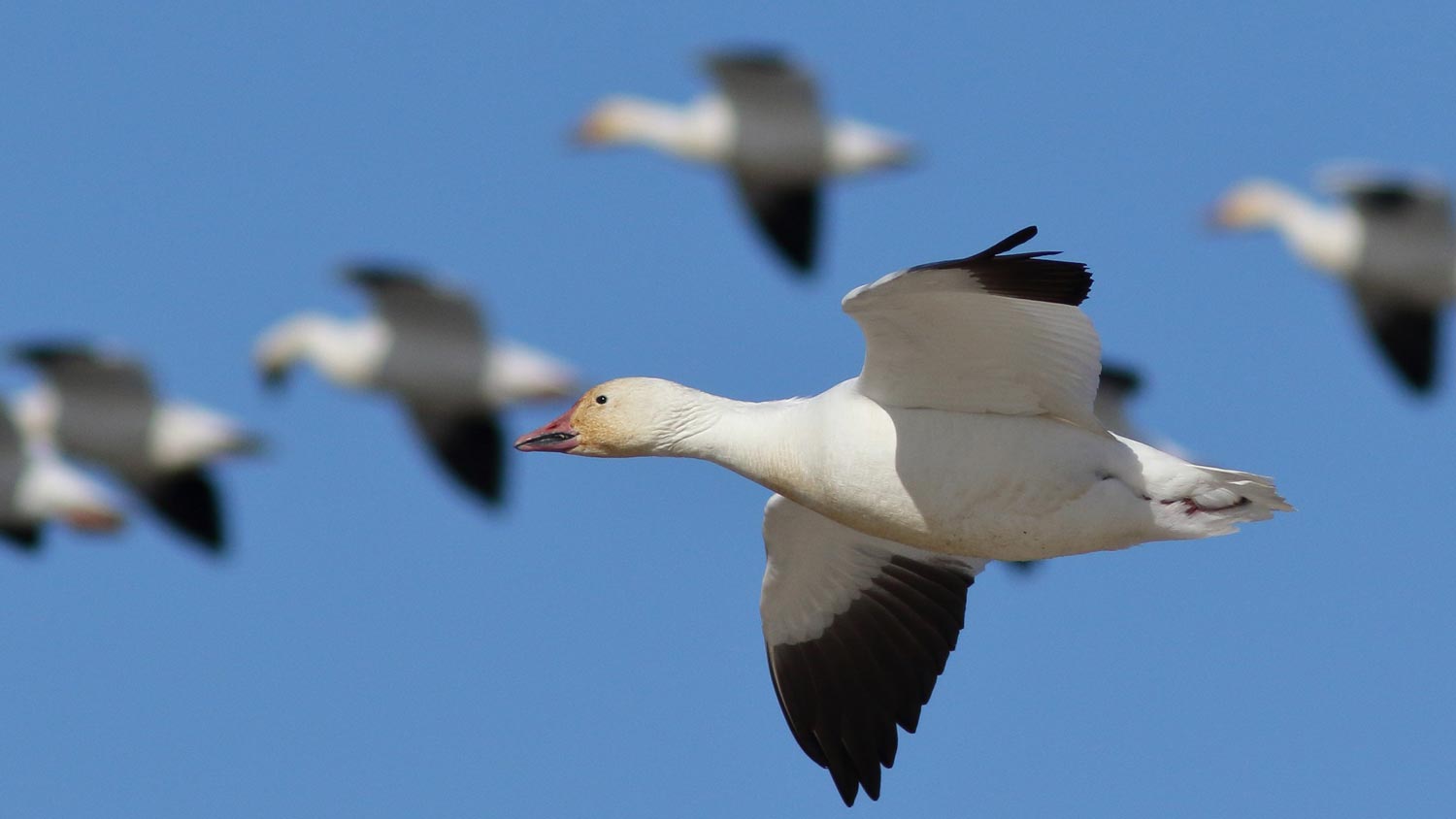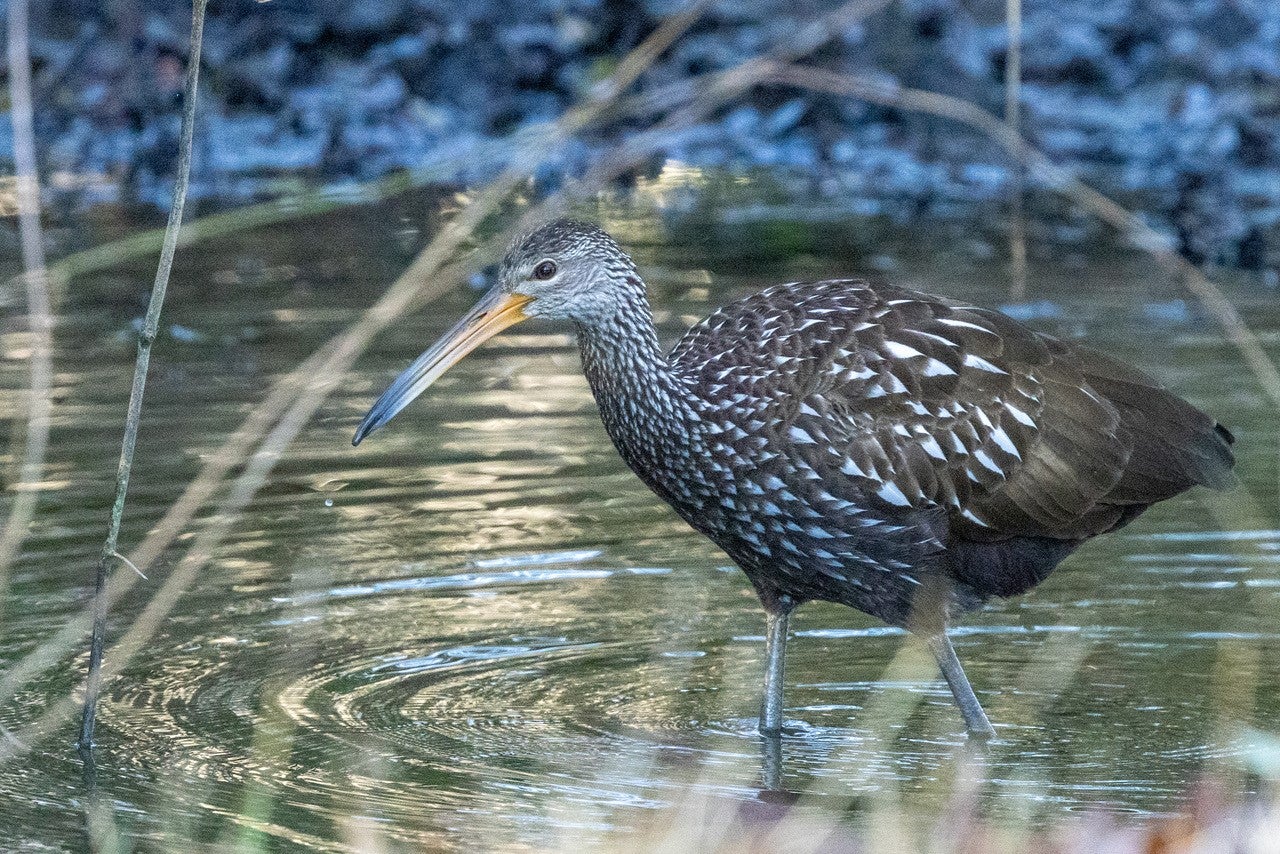Managing Audubon Americas’ initiatives in The Bahamas under the Coastal Resilience strategy for the past two years has been an inspiring experience. Recently, I embarked on another expedition to The Bahamas alongside Aurelio Ramos, Senior Vice President of Audubon Americas. This journey was more than just a visit—it was a meaningful reconnection with Audubon’s conservation efforts, a reaffirmation of vital partnerships, and an insightful realization of the challenges posed by climate change.
Flying from Nassau to Andros Island, I observed the intricate island formations embraced by deep turquoise waters, which gifted me a moment to reflect on Audubon’s legacy dating to the early 1950s when Robert Porter Alen discovered a tened diminishing population of flamingos in the southernmost islands. Audubon’s science and swift response led to the preservation of Great Inagua as a national park. Today, this park, a sanctuary for thousands of flamingos and numerous bird species, is recognized as an Important Bird Area (IBA) and has been included on the Ramsar list of Wetlands of International Importance.
The Bahamas spans 760 miles and covers 95,462 square miles and includes over 700 islands and 2,500 cays, featuring unique environments and diverse habitats. These include Caribbean pine forests that support migrating songbirds, tidal flats and mangroves for shorebirds and waterbirds, and isolated cays for breeding seabird populations. The Bahamas is home to 300 bird species, over half of which are migratory species from the U.S. and Canada, such as the near threatened Piping Plover and the American Oystercatcher. Endemic species include the Bahama Yellowthroat, Bahama Swallow, Bahama Woodstar, the critically endangered Bahama Oriole (limited to Andros Island), and the Inagua Woodstar, found only on Great Inagua and Little Inagua islands.
Confronting Climate Change Challenges and Pioneering Conservation Efforts
Although these parks are protected on paper, they still face many risks, including inadequate and limited management capacity, insufficient funding, and climate change, a significant challenge Audubon is addressing, as part of its new strategic plan “Flight Plan“. Climate change poses serious threats to birds and biodiversity as a whole and the livelihoods of communities in The Bahamas. Rising sea levels, extreme weather events, droughts, wildfires, and habitat degradation demand urgent action.
During our recent visit, we encountered wildfires, a consequence of prolonged dry weather and intense heat, on Andros Island, which stands as one of the most pristine islands in The Bahamas and serves as a vital sanctuary for diverse wildlife habitats. More than 200 species of resident and migrating birds inhabit Andros8, further emphasizing its ecological importance.
Audubon recognizes the urgency of addressing these challenges and is actively working on Andros Island and building relationships with local actors. We are advocating for the protection of coastal habitats and aim to bolster resilience through new conservation efforts, aligned with Audubon Americas Coastal Resilience strategy.
Building Resilience with Partnerships
Conservation efforts in The Bahamas have seen remarkable progress thanks to the collaborative work of various organizations and partners on the ground, including the Bahamas National Trust, with support from Audubon. Research and advocacy from these partnerships provided essential data and insights to support the creation of national parks and key conservation sites.
A notable achievement is the establishment of the Exuma Cays Land and Sea Park, a crucial sanctuary for seabirds and marine life. Additionally, the designation of Joulter Cays National Park as a Marine Protected Area has been instrumental in safeguarding critical habitats from the threats of climate change and human activities. This includes protecting the endangered Piping Plover population, with research by Audubon and the Bahamas National Trust revealing that the Cays provide a vital wintering habitat for 10{a47be734f0df8d7f120a7df290cf380c79376e8356d1aab405383bb23aa6ce67} of the overwintering Piping Plovers that breed along the Atlantic Coast of the United States and Canada. This designation not only ensures the protection of this endangered species but also bolsters local economies through activities such as eco-tourism (e.g., birding) but also sports and commercial fishing.
These key partnerships have also been instrumental in the recent nomination of the Berry Islands as a Western Hemisphere Shorebird Reserve Network (WHSRN) site. Through community engagement efforts and collaborations with local organizations, we’re positioned to raise awareness about the significance of WHSRN sites and drive conservation initiatives in The Bahamas and beyond. The collaborative leadership and support from various conservation groups have been essential in these efforts, demonstrating the power of partnership in achieving lasting environmental protection.
Continued monitoring of these and other vulnerable sites in The Bahamas is crucial, along with the deployment of mitigation and adaptation measures such as nature-based solutions wherever possible.
More recently, and during our visit, we had the privilege of personally conveying Audubon’s unwavering commitment to forging partnerships with key institutions like the Ministry of Tourism, Investments and Aviation (MOTIA) of The Bahamas, Bahamas National Trust (BNT), academic partners like the Bahamas Agriculture and Marine Science Institute (BAMSI), the Inter-American Development Bank (IDB), and private partners such as Kamalame Cay. Working together with these institutions, we fueled vital research, advocacy, and community awareness programs throughout recent years, focused on two program areas – nature-based tourism training (with a birding focus) and protecting critical sites for birds.
These collaborations have been instrumental in advancing, for example, bird monitoring initiatives, nature guide training programs, and the adoption of Audubon-BNT-IDB joint bird guide training curriculums in The Bahamas.
Recently, we established joint goals with BAMSI through a Memorandum of Understanding (MOU) to foster nature tourism and conservation initiatives.
Empowering Guides as Ambassadors of Conservation:
Bird Guide and Nature-Tour Guide Training Programs
Central to Audubon Americas’ mission in The Bahamas is to cultivate local expertise through comprehensive bird-guide and nature tour-guide training programs. Developed in collaboration with esteemed partners like the Inter-American Development Bank (IDB) and the Bahamas National Trust (BNT), the Bird Guide Training Curriculum, available for basic and advanced levels, catalyzes environmental education and sustainable tourism. This curriculum also forms the foundation of the Nature Tour Guide Training program, administered by BAMSI with support from Audubon, which started to be successfully implemented and signals a promising future driven by our collective efforts.
Investing in the capacity building of local guides is paramount for driving sustainable tourism and conservation outcomes. These guides undergo training based on the previously developed bird guide curriculum, ensuring they acquire the necessary knowledge and skills to effectively serve as ambassadors for the protection of natural habitats. They play a pivotal role in promoting responsible tourism practices, advocating for biodiversity conservation, and fostering community engagement. Additionally, by empowering local communities with valuable skills and income opportunities, sustainable tourism initiatives contribute to the preservation of cultural heritage and support livelihoods reliant on healthy ecosystems.
Building Capacity through Exchange Programs in the Caribbean region
Our approach extends beyond conventional training initiatives; we’ve embarked on a comprehensive strategy to bolster expertise and foster collaboration across the Caribbean region. Through strategic partnerships with key stakeholders in the Bahamas and the wider Caribbean bird-based tourism sector, such as BAMSI and the Royal Society for the Protection of Birds (RSPB), we aim to encourage active participation in bird-related learning opportunities and facilitate knowledge exchange. This initiative has evolved into a robust exchange program, where we collaborate with organizations like the RSPB in Turks and Caicos and BAMSI in The Bahamas. The goal of the program is to build confidence among guides on shorebird identification, developing practical skills in field monitoring and research, use of tools, and data management. By facilitating student guide exchanges and promoting involvement in field and research activities, we not only enhance skills but also cultivate a sense of camaraderie and collaboration among emerging conservationists.
Driving Sustainable Tourism and Conservation
As we chart our course forward, a new Audubon Americas Bird-Based Tourism strategy and a Playbook focused on nature-based tourism have been developed. The Bahamas, with its rich biodiversity and pristine landscapes, holds immense potential for establishing birding trails that attract tourists and generate economic opportunities for local communities.
This journey through The Bahamas has reinforced my belief in the transformative power of collective action. Audubon Americas’ legacy in The Bahamas is a testament to the resilience of nature and the human spirit. As we confront the challenges of climate change and biodiversity loss, let us continue to work together, driven by our shared commitment to preserving The Bahamas’ natural heritage for generations to come, with a steadfast focus on prioritizing the needs of local communities. Through continued targeted conservation initiatives, community education, and sustainable tourism practices, we are dedicated to creating more successful stories, such as the inspiring protection of the pink flamingo, to preserve critical species and ecosystems. The triumphs of our past successes fuel our ongoing commitment to environmental stewardship, inspiring us to strive for a future where both nature and communities flourish in harmony.




